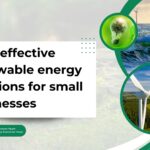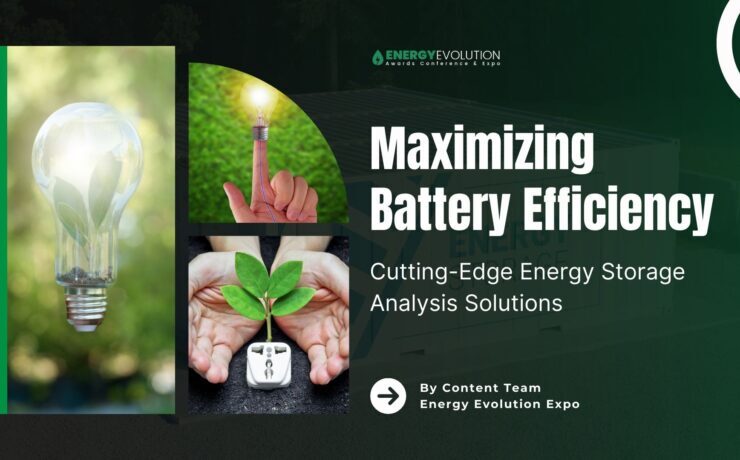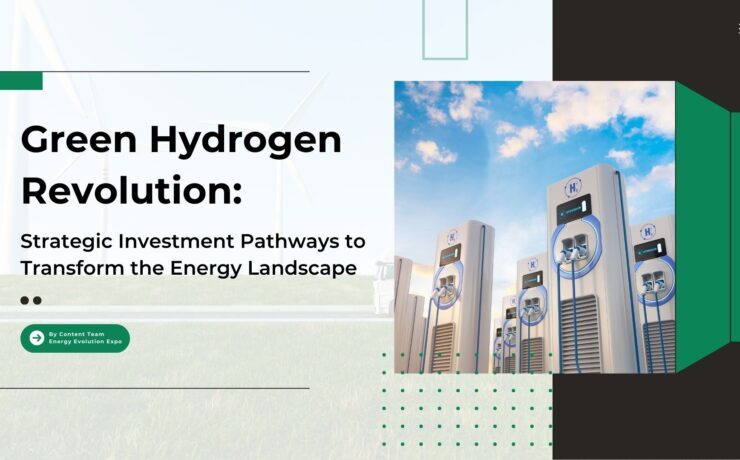Designing for Sustainability: Innovative Approaches in Construction
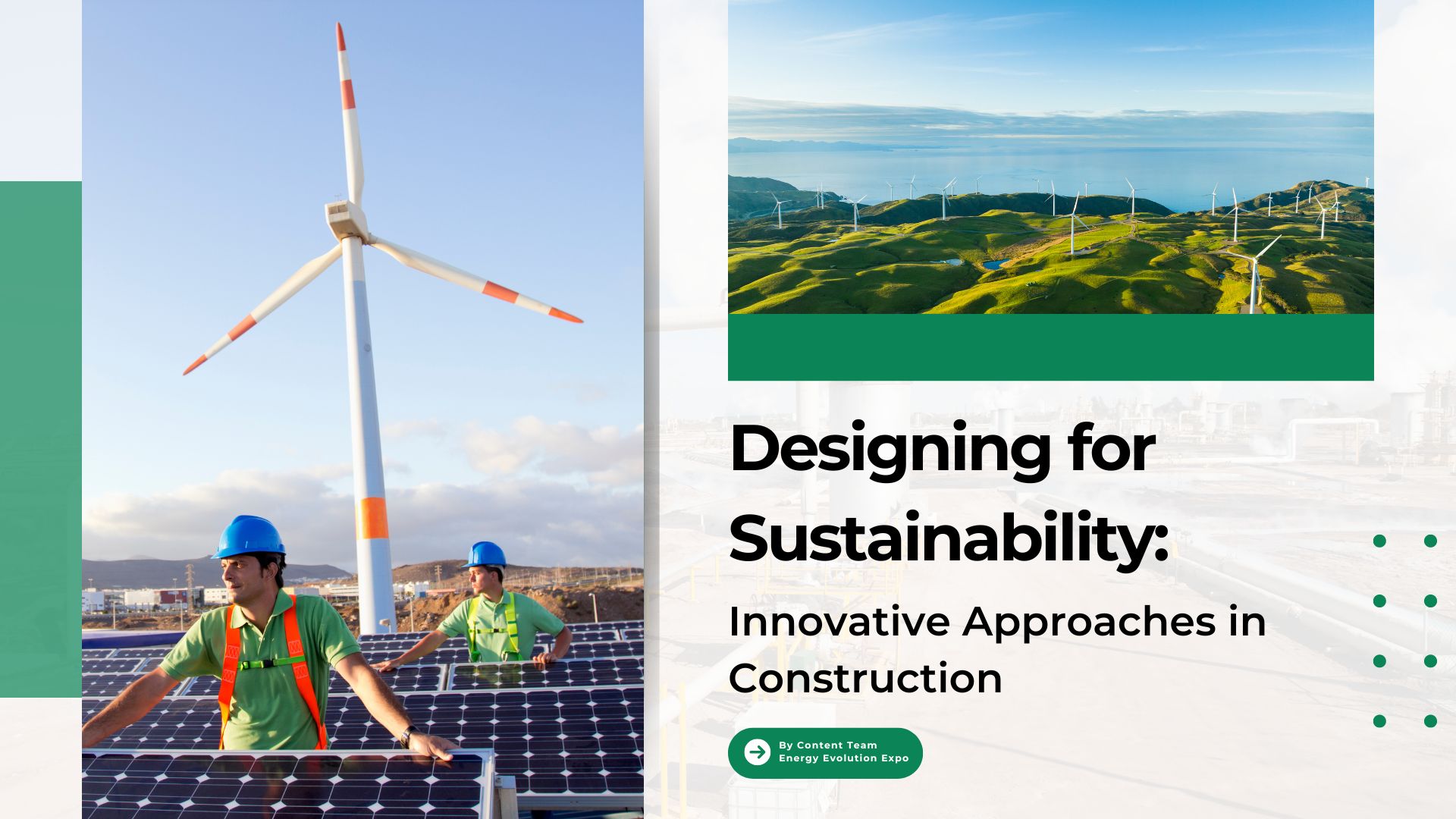
Approaches in Construction
Construction of green buildings incorporates sustainable methods to reduce environmental harm, improve energy efficiency, and create healthier living spaces. These strategies involve maximizing natural light and airflow, utilizing eco-friendly and reused materials, and implementing water-saving technologies like low-flow fixtures and rainwater collection systems. Waste management is a priority through meticulous planning, recycling, and material repurposing. To further enhance the indoor environment, non-toxic materials are used and renewable energy sources such as solar panels and wind turbines are integrated. Moreover, careful consideration in selecting locations and landscaping helps conserve natural resources and minimize ecological impact, fostering sustainable development.
Energy-Efficient Design:
In passive solar design, buildings should be oriented to maximize solar gain in winter and minimize it in summer. Utilizing thermal mass materials like concrete, brick, or stone helps absorb and store heat during the day, releasing it at night. Strategic window placement and shading, such as overhangs and louvers, optimize natural light and control heat gain.
A high-performance building envelope is crucial, featuring quality insulation in walls, roofs, and floors to reduce heat loss and gain, airtight construction to prevent drafts, and double or triple-glazed windows with Low-E coatings to minimize heat transfer. Energy-efficient HVAC systems, including air-source or ground-source heat pumps, energy recovery ventilation systems to reclaim heat from exhaust air, and zoning systems for targeted heating and cooling, further enhance efficiency.
Renewable Energy Integration:
Solar energy integration in buildings involves using photovoltaic (PV) panels and solar water heaters. PV panels can be mounted on rooftops, integrated into building facades, or incorporated into windows as building-integrated photovoltaics (BIPV). These panels convert sunlight directly into electricity, providing a renewable and clean energy source that reduces dependence on fossil fuels, lowers electricity bills, and contributes to achieving net-zero energy goals. Solar water heaters, including flat-plate collectors, evacuated tube collectors, and integral collector-storage systems, use solar thermal energy to heat water stored in tanks for domestic use. This approach reduces the need for gas or electric water heating, thereby lowering energy consumption and greenhouse gas emissions.
Wind energy integration in buildings includes the use of building-integrated wind turbines and urban wind farms. Small-scale wind turbines can be mounted on rooftops or incorporated into building structures, converting wind energy into electricity for on-site use or feeding into the grid. This renewable energy source is especially useful in high-rise buildings or windy areas and can complement solar power by providing energy at different times. Urban wind farms utilize available rooftop space in cities to install multiple small wind turbines, generating electricity for the buildings below or the local grid. This approach maximizes renewable energy generation in densely populated areas, reduces transmission losses, and serves as a visual symbol of sustainability.
Geothermal energy integration in buildings involves geothermal heat pumps and geothermal power plants. Geothermal heat pumps consist of a heat pump, ground heat exchanger, and distribution system, utilizing the stable ground temperature to provide heating in winter and cooling in summer. These systems are highly efficient, reducing the need for conventional heating and cooling while keeping operating costs low. Geothermal power plants, suited for regions with high geothermal activity such as volcanic areas, tap into underground steam or hot water to generate electricity. This provides a continuous, reliable source of renewable energy with minimal environmental impact.
Biomass energy in sustainable construction involves the use of biomass boilers and anaerobic digesters. Biomass boilers burn organic materials like wood pellets, chips, or agricultural residues to produce heat for space heating or hot water, utilizing waste materials and reducing reliance on fossil fuels, potentially achieving carbon neutrality if managed sustainably. Anaerobic digesters convert organic waste into biogas through anaerobic digestion, which can be used for heating, electricity generation, or as vehicle fuel. This process reduces waste sent to landfills, produces renewable energy, and generates nutrient-rich digestate for use as fertilizer.
Hydroelectric energy in sustainable construction can be harnessed through micro-hydro systems and rainwater harvesting. Micro-hydro systems are ideal for buildings near flowing water sources like streams or small rivers, converting the kinetic energy of flowing water into electricity and providing a reliable, consistent renewable energy source with minimal environmental impact. Rainwater harvesting systems collect and store rainwater from rooftops or other surfaces, which can be used for irrigation, flushing toilets, and other non-potable purposes. This reduces the demand on municipal water supplies, lowers water bills, and supports sustainability in drought-prone areas.
Sustainable Materials:
Sustainable construction techniques emphasize using materials and methods that reduce environmental impact. Here are some examples:Bamboo: Known for its rapid growth and strength, bamboo is a sustainable alternative to traditional wood. It’s used in flooring, wall panels, and even structural elements. For example, the Green School in Bali uses bamboo extensively in its buildings, showcasing its versatility and sustainability.Recycled Steel: Using recycled steel reduces the need for new steel production, conserving resources and energy.
The Empire State Building renovation incorporated recycled steel, significantly cutting down the environmental footprint of the project.Rammed Earth: This technique uses natural soil, compacted in layers to create durable walls with excellent thermal mass. An example is the Sirewall (Structural Insulated Rammed Earth) technique used in homes in British Columbia, offering energy efficiency and sustainability.Reclaimed Wood: Reclaimed wood from old buildings, barns, and factories is reused in new constructions, reducing the need for new lumber.
The Brooklyn Bridge Park in New York utilized reclaimed wood for its benches and decking, giving a second life to old materials.Straw Bales: Straw bales offer excellent insulation and are a renewable resource, often used in walls for both insulation and structural purposes. The Burke Museum of Natural History and Culture in Seattle incorporated straw bale construction, demonstrating its practicality in modern buildings.Recycled Plastic: Plastic waste is repurposed into construction materials like insulation, composite lumber, and bricks.
The EcoArk in Taipei is made from POLLI-Bricks, which are created from recycled PET bottles, illustrating how plastic waste can be innovatively reused.Hempcrete: Made from hemp fibers mixed with lime, hempcrete is a lightweight, insulating material that also sequesters carbon dioxide. The Highland Hemp House in Washington uses hempcrete for its walls, promoting a sustainable and healthy building environment.
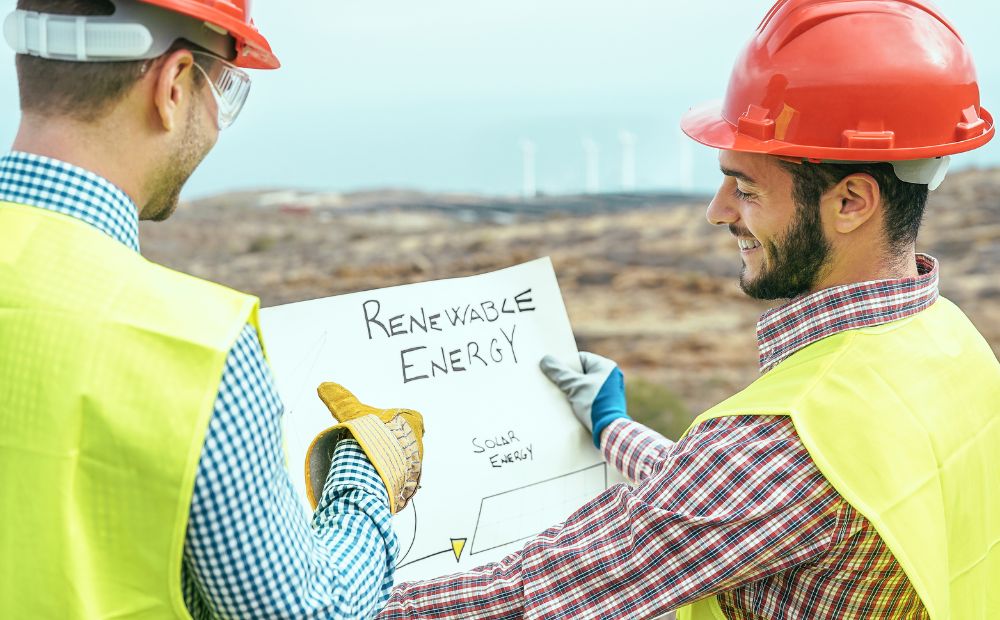
Water Efficiency:
Water efficiency is a crucial aspect of sustainable construction, focusing on reducing water consumption and improving water management. Here are some techniques and real-world examples:
1. Low-Flow Fixtures: Installing low-flow faucets, showerheads, and toilets significantly reduces water usage. The Bullitt Center in Seattle uses low-flow fixtures throughout the building, contributing to its net-zero water usage goal.
2. Rainwater Harvesting: Collecting and storing rainwater for non-potable uses like irrigation and toilet flushing reduces the demand on municipal water supplies. The Solaire building in New York City incorporates a comprehensive rainwater harvesting system, which supplies water for its cooling towers and irrigation.
3. Greywater Recycling: Greywater from sinks, showers, and laundry can be treated and reused for landscaping and toilet flushing. The Omega Center for Sustainable Living in Rhinebeck, New York, uses a greywater recycling system as part of its innovative Eco Machine, which treats wastewater on-site.
4. Xeriscaping: Landscaping with drought-resistant plants minimizes the need for irrigation. The Desert Botanical Garden in Phoenix, Arizona, showcases xeriscaping techniques, using native plants that thrive with minimal water.
5. Permeable Paving: Permeable paving materials allow water to infiltrate the ground, reducing runoff and recharging groundwater. Chicago’s Green Alley Program uses permeable paving to manage stormwater in urban areas, reducing the burden on the city’s sewer system.
6. Dual-Flush Toilets: Dual-flush toilets offer two flush options, allowing users to choose a lower water volume for liquid waste and a higher volume for solid waste. The Council House 2 (CH2) in Melbourne features dual-flush toilets, contributing to the building’s water efficiency.
7. Water-Efficient Landscaping: Using smart irrigation systems and native plant species reduces water consumption. The California Academy of Sciences in San Francisco has a living roof planted with native species that require minimal watering, enhancing biodiversity and reducing the heat island effect.
8. Water-Saving Appliances: Energy-efficient dishwashers and washing machines use less water than conventional models. The Edge in Amsterdam incorporates water-saving appliances, contributing to its high sustainability standards.
Indoor Environmental Quality:
Improving indoor environmental quality (IEQ) in sustainable construction focuses on creating healthy, comfortable, and productive indoor environments while minimizing energy use and environmental impact. Here are key techniques and examples:Natural Ventilation: Designing buildings to maximize natural ventilation reduces reliance on mechanical systems and improves air quality. The Pearl River Tower in Guangzhou, China, incorporates a double-skin façade that enhances natural ventilation, promoting fresh air circulation while minimizing energy consumption.Daylighting: Maximizing natural light through thoughtful building orientation and window design reduces the need for artificial lighting and enhances occupant well-being.
The Bullitt Center in Seattle features large windows and light shelves that optimize daylight penetration, creating a pleasant indoor environment.Low-VOC Materials: Using low-VOC (volatile organic compound) materials in finishes, adhesives, and furnishings reduces indoor air pollution and promotes better air quality. The Bank of America Tower at One Bryant Park in New York City utilized low-VOC materials extensively, contributing to its LEED Platinum certification and improved IEQ.Thermal Comfort: Ensuring proper insulation, efficient HVAC systems, and responsive temperature control contributes to occupant comfort and satisfaction.
The Richardsville Elementary School in Kentucky prioritized thermal comfort with advanced HVAC systems and passive solar design elements, creating a conducive learning environment.Biophilic Design: Incorporating elements of nature such as green walls, indoor plants, and natural materials enhances well-being and reduces stress among occupants. The Edge in Amsterdam integrates biophilic design principles with extensive greenery and natural materials, promoting a healthier indoor environment.Acoustic Comfort: Designing spaces to minimize noise pollution through sound-absorbing materials and strategic layout improves occupant comfort and productivity.
The New York Times Building in New York City features acoustic panels and soundproofing materials, ensuring a quiet working environment for employees.Indoor Air Quality Monitoring: Implementing systems to monitor and maintain indoor air quality in real-time ensures continuous improvement and responsiveness to changing conditions. The Bullitt Center in Seattle includes advanced air quality monitoring systems to optimize indoor environmental quality for its occupants.
Waste Reduction:
Waste reduction in sustainable construction involves minimizing the amount of materials sent to landfill and optimizing resource use throughout the building process. Here are key techniques and examples:Design for Deconstruction: Creating buildings with components that can be easily disassembled and reused or recycled at the end of their lifecycle reduces waste. The Building Materials Reuse Association promotes this approach, encouraging buildings like the REI Seattle flagship store, which allows for easy disassembly and material reuse.
Prefabrication and Modular Construction: Off-site prefabrication reduces on-site waste by manufacturing components to precise measurements, minimizing material offcuts and scrap. The Brock Commons Tallwood House at the University of British Columbia utilized prefabricated timber components, reducing construction waste and accelerating the building process.Recycling and Reuse: Implementing comprehensive recycling programs on construction sites and using salvaged materials from demolition or renovation projects reduces waste sent to landfill.
The Bertschi School Living Building Science Wing in Seattle incorporated recycled materials extensively, demonstrating a commitment to waste reduction and sustainability.Lean Construction Practices: Lean construction principles focus on optimizing processes to eliminate waste, such as reducing excess inventory, transportation inefficiencies, and unnecessary downtime. Projects like Toyota’s LEED Platinum-certified headquarters in Plano, Texas, implemented lean practices to minimize construction waste and enhance efficiency.Waste Management Plans: Developing and implementing detailed waste management plans during construction ensures that waste is sorted, recycled, or disposed of responsibly. The Phipps Conservatory and Botanical Gardens in Pittsburgh adhered to a stringent waste management plan during its construction, emphasizing recycling and reducing waste generation.
Green Building Certifications:
1. LEED (Leadership in Energy and Environmental Design):
– Comprehensive Rating System: Covers sustainable site development, water savings, energy efficiency, materials selection, and indoor environmental quality.
– Certification Levels: Certified, Silver, Gold, and Platinum, based on the number of points earned.
2. BREEAM (Building Research Establishment Environmental Assessment Method):
– Holistic Approach: Assesses building performance in areas like energy, health, materials, transport, water, waste, land use, and ecology.
– Rating Levels: Pass, Good, Very Good, Excellent, and Outstanding.
3. Living Building Challenge:
– Performance-Based Standard: Focuses on regenerative design and includes criteria for place, water, energy, health and happiness, materials, equity, and beauty.
– *Petals and Certification*: Projects can achieve Petal Certification or full Living Building Certification.
4. Passive House:
– Energy Efficiency Standard: Emphasizes ultra-low energy buildings with superior insulation, airtight construction, and heat recovery ventilation.
– Certification: Based on meeting stringent energy consumption criteria.
Efforts in sustainable construction aim to reduce environmental impact while enhancing efficiency. These strategies encompass initiatives such as energy-efficient design, use of sustainable materials, water conservation practices like rainwater harvesting, waste reduction through recycling and prefabrication, enhancements in indoor environmental quality, and adoption of eco-friendly site management techniques. These measures are crucial in promoting environmentally responsible buildings and creating healthier, more efficient environments for occupants.
We need to keep up with all recent innovations to reap maximum benefits and to facilitate a better understanding of the latest developments and trends in the Renewable energy Industry, various Conferences and Expos, which bring the Industry leaders together, serve as an all-inclusive platform. The Energy Evolution Awards, Conference, and Expo organized by Next Business Media is making its debut in Spain in 2025. It will be a leading forum dedicated to honoring excellence in Energy Technology, showcasing innovations, and fostering collaborations.
The events unite industry leaders, and visionaries to explore the latest advancements, tackle key challenges, and shape the future of Energy. The Energy Evolution Awards, Conference, and Expo will celebrate outstanding achievements, promote sustainable practices, and drive the Energy Industry forward into a technologically advanced sustainable era. Energy Evolution Awards, Conference, and Expo will be a platform for cultivating innovation and shaping a brighter, more efficient energy landscape.


